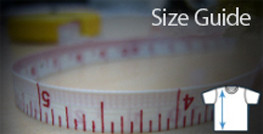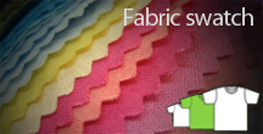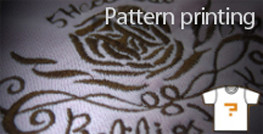About fabric:
1.What is the uniform fabric has been used?
2.How can speed up sweat shirt?
3.What is the natural fibers and synthetic fibers, respectively?
4.What are the characteristics of natural fibers?
5.Natural fibers and synthetic fibers What are the advantages and disadvantages?
6.How to tell the cloth harmful?
7.toxic impact of clothing on the body?
8.What is the Single Jersey and double plain?
9.What type of plain cloth and what the pros and cons?
10.What are the advantages of cotton fabric and disadvantages?
11.What is hemp fabric strengths and weaknesses?
12.What are the advantages of wool fabrics and disadvantages?
13.What are the advantages of silk fabrics and disadvantages?
14.What are the advantages of chemical fiber and disadvantages?
15.What are the advantages and disadvantages of knitting?
16.fur and leather What advantages and disadvantages?
Q: 1 What is the uniform fabric has been used?
A: The uniform is generally used with a mesh cloth. The T-shirt T-shirt fabrics with plain weave fabric generally. The above two can be divided into polyester, T \ C, CVC, cotton. No polyester cotton, T \ C cotton cloth containing about 25%. CVC cotton cloth containing about 60%, by definition, that is, all of the texture of cotton is cotton. More easily with lower cotton fluff ball (plain fabric mesh fabric is generally easier than pilling). Cotton fabrics more difficult to fluff ball, but the drawback is easy to shrink and wrinkle deformation. Recommended collar and round neck T-shirt Tee applications CVC fabric, fluff ball short time, the deformation will not shrink.
Q: 2 How can speed up sweat shirt?
A: made from recycled polyester jersey that 13% lighter weight jersey and make stretching more than 10%. Each line caused by the yarn spinning, rapid evaporation of sweat, so jersey to keep light and dry.
Q: 3 What is the natural fibers and synthetic fibers, respectively?
A: There are two natural fibers, animal and plant can be divided into two. Animals, animal fiber is hair, skin, or silk, etc.; plant fiber is commonly used for cotton and linen. Man-made fibers are petroleum by-products.
Q: 4 What are the characteristics of natural fibers?
A: natural fibers, animal hair or skin, both soft and extremely warm, suitable for wearing in cold areas, but there are some on the clean and retention difficulties. Silk is soft and smooth texture easily but breathable, making skin feel cool, but the silk likely to have wrinkles, moisture resistance is poor, leading to high prices and limited production of cleaning and maintenance difficulties.
Q: 5 Natural fibers and synthetic fibers What are the advantages and disadvantages?
A: The hemp plant fiber, relatively coarse fiber, textile fabric, although straight out of the appearance, but the disadvantages is that it gives a rough feel. In addition, the cotton woven cotton, the plant is widely used fiber materials. This is because cotton can be breathable, absorbent good, but also warm and not with a static, and easy to grow, the price is right, it could be popular, but cotton is easy to wrinkled.
Man-made fibers are petroleum by-products, low production costs, the advantages are quite complete, washable, quick drying and cold. Instead the risk of man-made fibers are flammable, easy to vacuum caused by allergies and other Egypt, together with the chemical structure of the lack of man-made fiber fabric hydrophilic gene, moisture absorption and ventilation is poor, it is difficult to absorb sweat, prolonged exposure to this type of clothing, skin will often sweat and clothes of chemical stimulation, easily lead to "chemical dermatitis."
Q: 6 How to tell the cloth harmful?
A: cloth with harmful chemicals, the main killer is formaldehyde. We have to distinguish whether the remaining excess of formaldehyde clothing, mainly through the sense of smell to determine, because formaldehyde has stimulated the taste, so do not buy clothes smell unusual. If the clothing does not come from a reputable brand, even if there is no obvious irritant smell, are advised to purchase after immersion in water, wash before wearing through. Because formaldehyde soluble in water, so after washing, which can effectively remove the residual formaldehyde in clothing.
Q: 7 toxic impact of clothing on the body?
A: decomposable aromatic amine widely used by the textile sector, the main reason is because they are inexpensive, this type of dye color range, bright durable, easy to color and solid color and high degree. In the hot summer heat, sweat easily degradable clothing dye, so that harmful substances penetrate the skin with sweat, ranging from would cause headache, vomiting, cough, insomnia, nausea and fatigue and discomfort, weight is more carcinogenic. Study of the medical profession had long-term exposure to toxic dyes such people will be suffering from bladder cancer was nearly 30 times.
Also colored fabrics improper pH control, high / low will cause itchy skin adverse reactions, therefore we should first wash new clothes, to neutralize the pH, reducing allergic reactions. The following is a toxic dye on the body:
1 chemical dermatitis - In addition, some synthetic fabrics lack the chemical structure of hydrophilic gene, moisture and poor ventilation, easy to evaporate and absorb sweat, with a strong static, long-term repeated exposure to these allergens when underwear, skin sweat and the clothes will be on the chemical stimulation, easily lead to "chemical dermatitis."
(2) mechanical damage of skin - wearing tight-fitting clothing style inappropriate or hard textured thick clothes, will hinder the body blood circulation, easily lead to local inflammation of skin damage and impregnated
3 acute inflammation or toxicity - on the left in the fiber fabric dimethyl formamide, formaldehyde on human skin, eyes and mucous membranes and other organs to stimulate the largest lead after inhaled too much headache, dizziness, fatigue, nausea, vomiting, abdominal pain and other symptoms of poisoning, serious injuries but also the gastrointestinal tract, causing gastrointestinal bleeding; also easy to damage the liver, malaise, poor appetite, more likely, hepatomegaly and elevated aminotransferases of the situation.
Q: 8 What is the Single Jersey and double plain?
A: plain cloth is woven into the plain. Single Jersey is on both sides of fabric textures are different. Double knitting is plain that both sides of the same or nearly the same. Double plain is generally thicker, more suitable for long-sleeved t shirt, and Single Jersey are more suitable for short-sleeved t shirt.
Q: 9 What type of plain cloth and what the pros and cons?
A: can be divided into plain weave cotton fabric, CVC, T / C, imitation cotton. Cotton is cotton that is 100%. Advantage is better performance sweat, more breathable, easy to cramped, but the disadvantage is easier to fold and easier to shrink.
CVC is 50% -99% cotton, 60% cotton, generally, other components are polyester. CVC has the advantage of the advantages of cotton, plain weave cotton cloth, but in no one's shortcomings, after adding the polyester fabric that is more to come forward, easy to fold, easier to dry, shrink the case also are small, compared with cotton there will be a little baked, but it is generally difficult to detect, other than CVC cotton t shirt plain easier to dry.
Q: 10 What are the advantages of cotton fabric and disadvantages?
A: Advantages: good moisture absorption / permeability, soft and comfortable to wear, can be warm, easy to dye, color bright, alkali, heat resistance, suitable for making children's clothing and summer clothing. Disadvantages: poor acid resistance, flexibility is not high, high shrinkage, easy wrinkling, easy to mold, for a long time and sun exposure, the fiber will harden and crisp.
Q: 11 What is hemp fabric strengths and weaknesses?
A: Advantages: high strength, thermal conductivity, high moisture absorption ability than cotton, is not sensitive to the acid-base reaction, anti-fungal, not easy to damp moldy, bright color, not faded, the color temperature is high, water-jet printing directly on the opposite side iron. Disadvantages: uncomfortable to wear, the appearance of rough, blunt.
Q: 12 What are the advantages of wool fabrics and disadvantages?
A: Advantages: fastness wear, warm, flexible, anti-wrinkle, not fade. Disadvantages: easy to shrink, heat resistance is poor, because a prolonged period will lead to tissue damage under strong light, wool susceptible to insects, friction will often fluff ball.
Q: 13 What are the advantages of silk fabrics and disadvantages?
A: Advantages: soft, smooth, bright colors, gorgeous high, moisture and heat. Disadvantages: No light, no water, no alkali, raw fold, easy to absorb the body, not strong enough, faded rapidly.
Q: 14 What are the advantages of chemical fiber and disadvantages?
A: Chemical fiber is divided into fiber for the fiber element, polyester, cotton, acrylic, acrylic, PVA, C-fiber, etc.
Recycled fiber advantages: moisture, breathable, soft, comfortable, have the effect of silk, bright color, chromatography complete and better luster. Disadvantages: easy to wrinkle, not crisp, easy to shrink.
Polyester for the improved version, adding natural fibers, recycled fibers, fiber blends.
Polyester advantages: anti-wrinkle, strength, wear washable quick-drying, no worms, no rotten, easy storage. Polyester Disadvantages: poor moisture absorption, ventilation is poor, uncomfortable to wear, easy cleaning, easy to fluff grains.
Nylon Advantages: good flexibility, and vigorous, like wool, high strength, warmth, light. Nylon Disadvantages: poor moisture absorption, poor comfort, improved after blending.
Acrylic Polyacrylonitrile Fiber Advantages: good flexibility, soft to the touch, better shape retention. Acrylic Disadvantages: does not absorb moisture, not heat.
PVA Vinylon Advantages: good strength, moisture, not afraid of mold bore, firm texture, durable. Dimensional fiber Disadvantages: not heat-resistant, easy to shrink, wrinkle easily.
Spandex Spandex Fiber Advantages: Flexible, comfortable, acid, alkali, abrasion. Spandex Disadvantages: low strength, does not absorb moisture, not heat.
Polypropylene Polypropylene Fiber advantages: high strength, good elasticity, wear-resistant, crisp appearance, size and stability. PP Disadvantages: does not absorb moisture, not heat.
Q: 15 What are the advantages and disadvantages of knitting?
A: The advantages of knitted underwear: scalable, flexible, moisture absorption, air permeability. Knitted outerwear advantages: wear fastness, bright color, crisp crease, shrinkage is small, quick-drying washable. Knitted coat Disadvantages: poor moisture absorption, poor ventilation.
Q: 16 fur and leather What advantages and disadvantages?
A: Advantages: Grace appearance, dressed in elegant, noble and beautiful, comfortable and warm. Artificial fur advantages: warm, soft, elastic, fluffy texture, light, wearable, anti-bacterial pest control, easy preservation, can be washed. Disadvantages: Any anti-poor, lint-free rate. Artificial fur Advantages: soft, beautiful and durable, warm, moisture permeability, with a bore, free iron, Wen set size.






